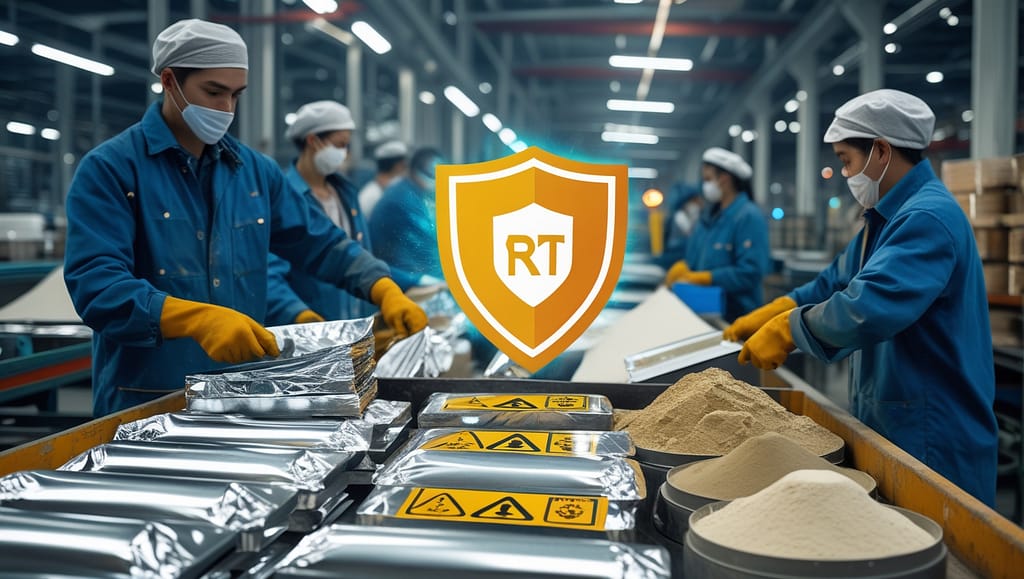How to Trademark Metal Foils & Powders in Class 2: A Complete Guide
When you hear about trademarks, you may think of company names, logos, or slogans. However, trademarks also apply to products, including industrial goods like metal foils and powders used in various industries. If you are in the business of manufacturing or selling metal foils and powders, protecting your brand through a trademark is crucial. It helps prevent competitors from using a similar name and ensures your brand stands out in the market.
Class 2 of trademark classification mainly covers paints, coatings, dyes, and related products. It also includes metal foils and powders used for painting, decorating, printing, and artistic purposes. This guide explains how to register a trademark for metal foils and powders under Class 2, the benefits of trademarking, and the legal requirements involved.

Understanding Trademark Class 2 for Metal Foils and Powders
The Nice Classification (NCL) system categorizes trademarks into 45 classes, and Class 2 specifically includes metal foils and powders used in coatings and decorative applications. These products are widely used in industries such as automotive, construction, packaging, printing, and fine arts.
Some examples of metal foils and powders under Class 2 include:
- Aluminum powder for painting
- Gold and silver leaf
- Metallic foils for artistic purposes
- Copper powder for industrial coatings
- Decorative metal flakes for furniture finishes
If your business deals with such products, registering a trademark ensures that your brand name is legally protected and cannot be copied by others in the same industry.
Why Trademarking Metal Foils and Powders is Important
1. Prevents Brand Confusion
Since multiple businesses may offer similar metal foils and powders, a registered trademark prevents other companies from using a similar brand name, which can confuse customers.
2. Legal Protection
A trademark gives you exclusive rights to use your brand name and take legal action if another business tries to use a similar identity.
3. Increases Brand Value
Over time, your brand gains recognition and trust, making it a valuable asset. A trademark can even help attract investors and business partners.
4. Gives You Nationwide Rights
Once registered, your trademark is valid across India, allowing you to expand without worrying about competitors using your brand name in different regions.
5. Protection from Counterfeiting
The metal foil and powder industry often face counterfeit products. A trademark helps fight against fake products that use your brand name illegally.
Step-by-Step Guide to Trademarking Metal Foils and Powders in Class 2
Step 1: Conduct a Trademark Search
Before applying for a trademark, check whether your desired brand name is already registered. You can do this through:
- The IP India website (https://ipindia.gov.in/)
- A professional trademark consultant or lawyer
A search helps you avoid legal conflicts and ensures your chosen name is unique.
Step 2: Choose a Unique Brand Name
Your brand name should be distinctive, easy to remember, and not too generic. Avoid names that directly describe the product, like “Gold Foil Paints”—such names are difficult to trademark.
Step 3: Prepare the Trademark Application
For filing a trademark application, you need:
- Brand name and logo (if applicable)
- Description of goods/services (specifically mentioning metal foils and powders)
- Business details (like company name and address)
- Power of Attorney (if filed through an agent)
Step 4: File the Trademark Application
You can file the trademark application online through the IP India portal or offline at the trademark registry office. The application can be filed under individual, partnership, LLP, or company name.
Step 5: Examination by Trademark Office
After submission, the trademark office reviews your application to check if it meets all legal requirements. If any issues arise, they issue an examination report.
Step 6: Publication in Trademark Journal
If there are no objections, your trademark is published in the Trademark Journal. This allows the public to oppose your trademark if they believe it conflicts with their brand.
Step 7: Trademark Registration Certificate
If no one opposes within 4 months, your trademark is registered, and you receive a Trademark Registration Certificate.
Step 8: Trademark Renewal
Trademarks in India are valid for 10 years and must be renewed before expiration to maintain protection.
Common Mistakes to Avoid When Trademarking Metal Foils and Powders
- Choosing a Descriptive Name – Generic names like “Metallic Powder” are hard to trademark.
- Not Conducting a Trademark Search – If your chosen name is already registered, your application may be rejected.
- Filing in the Wrong Class – Class 2 covers metal foils and powders for painting and decoration, but if your products have a different use, they may belong in another class.
- Ignoring Trademark Renewal – Many businesses forget to renew their trademarks, losing legal protection.
- Not Monitoring Your Trademark – Even after registration, you must monitor and take legal action if others misuse your trademark.
Conclusion
Trademarking metal foils and powders under Class 2 is an important step to protect your brand, prevent counterfeiting, and build business credibility. The process involves choosing a unique brand name, filing the application, and following legal steps until approval.
If you are dealing with metallic foils, powders, and coatings, securing a trademark ensures exclusive rights and prevents competitors from copying your brand. If you need assistance with trademark registration, you can contact VMK Professionals for expert guidance and legal support.
Get Expert Help for Trademark Registration
At VMK Professionals, we provide expert trademark registration services to help businesses secure their brand identity. Contact us today for a free consultation and ensure your trademark is registered without any legal hassle.

